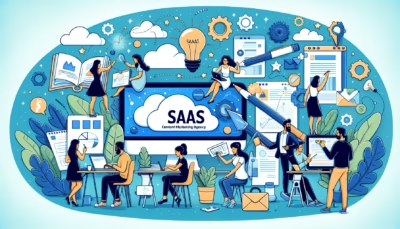Understanding SaaS Metrics
When I first dipped my toes into SaaS metrics, it didn’t take long to see how they whip up the magic in our marketing decisions. Knowing these numbers can really spring our game into action.
Key Metrics Overview
If you’re steering the ship as a SaaS marketing manager or just starting out, these metrics are like your trusty compass, pointing out where you’re soaring and where you might be stalling.
Key SaaS Metrics:
| Metric | What’s It About? | Why It Matters |
|---|---|---|
| Customer Churn Rate | Percentage of customers waving goodbye in a set timeframe | Helps us figure out what’s driving folks away and patch the holes |
| Revenue Churn | How much dough we’re losing when customers leave | Shows the financial boo-boos of losing customers |
| Monthly Recurring Revenue (MRR) | The steady cash flow from subscriptions every month | Keeps an eye on growth spurts and slumps |
| Annual Recurring Revenue (ARR) | Yearly subscription revenue in the bank | Handy for long-haul planning and when chatting with investors |
| Customer Acquisition Cost (CAC) | What it costs to snag a new customer | Guides decisions on spending smart in marketing and sales |
| Customer Lifetime Value (CLV) | How much a customer’s worth over time | Tells us the full picture of customer value |
If you’re itching to dig deeper into these metrics and their role in our marketing jalopy, take a look at our guide on the 5 most important saas metrics you should be tracking (and why).
Impact of SaaS Metrics
SaaS metrics are like having X-ray vision into your marketing mojo. They shine a light on what’s cooking, what’s burning, and where to fling those precious resources for the biggest bang.
- Customer Churn Rate
- Swapping stories from the customer churn rate gives us clues about customer patterns and their reasons for packing bags. Tackling churn is key to sticking around for the long haul.
- Revenue Churn
- This one adds dollars and cents to the churn story. Getting a grip on revenue churn helps us see the money hit of losing customers, guiding us on how to up our retention game.
- Monthly Recurring Revenue (MRR)
- With MRR (Kalungi), we get on-the-spot peeks into our business’s well-being. It’s crucial for tweaking marketing efforts promptly.
- Annual Recurring Revenue (ARR)
- ARR paints the big picture over the long haul (Kalungi), pivotal for plotting out dreams and hitting those investor chats with a plan.
- The Rule of 40
- This rule nudges us to keep growth and profits in check (LinkedIn). If growth rate and profit margin combined top 40%, that’s a golden ticket to a healthy biz.
With these metrics in hand, we can shape our marketing automation workflows for SaaS growth, fine-tune customer acquisition and keep those customers smitten.
Craving more juicy strategies? Swing by our deep dives on b2b saas marketing strategies and how to develop a high-converting content strategy for your saas business. Nailing these metrics lets us engineer marketing magic that steps up to the plate.
Customer-Centric Metrics
Okay, so you’ve got a SaaS biz and you want to keep your customers sticking around while making some smart decisions, right? We got some metrics for that! We’re diving into customer churn rate, why revenue churn matters, and how to get the most out of Customer Lifetime Value (CLV).
Customer Churn Rate Analysis
Think of customer churn rate as a club bouncer counting how many peeps are ditching your party each month. It’s a more useful number than knowing how long a piece of string is ‘cause it tells you who’s leaving and gives you a clue why. The crew over at HubSpot even back us up on this.
Here’s a quick visual to give you the rundown:
| Time Period | Total Customers at Start | Customers Lost | Churn Rate (%) |
|---|---|---|---|
| Q1 | 1000 | 50 | 5 |
| Q2 | 950 | 60 | 6.32 |
| Q3 | 890 | 40 | 4.49 |
| Q4 | 850 | 30 | 3.53 |
So, if you’re watching the numbers go up, up, and away, it’s time to reevaluate. If they head downward, you’re golden. For more on how to keep your folks coming back, check out this guide.
Revenue Churn and its Significance
Revenue churn is a fancy way of saying, “Are the big spenders leaving too?” It doesn’t just care about the headcount. It’s about who’s really bankrolling your dreams. HubSpot has some good reads on this topic.
Check this out for example:
| Time Period | Total MRR at Start | Lost MRR | Revenue Churn (%) |
|---|---|---|---|
| Q1 | $100,000 | $5,000 | 5 |
| Q2 | $95,000 | $6,500 | 6.84 |
| Q3 | $88,500 | $4,000 | 4.52 |
| Q4 | $84,500 | $3,000 | 3.55 |
When the high rollers start bailing, it’s time to rethink your tactics. Fancy retention strategies aren’t just wasted ink on paper. You’ll want to draw in your cash cows and keep ‘em on the hook. Curious for more secrets? Peek here.
Evaluating Customer Lifetime Value
CLV is like the golden ticket to you understanding how much moolah a customer brings over their lifetime with your biz. It’s a number investors notice, so you’d better get it right! According to HubSpot, it’s all in the math.
Here’s what the math nerds say:
| Metric | Formula | Example |
|---|---|---|
| Average Purchase Value | Total Revenue / Number of Purchases | $100 |
| Purchase Frequency | Total Purchases / Time Period | 2 per Year |
| Average Customer Lifespan | 1 / Churn Rate | 5 Years |
| Customer Lifetime Value | Average Purchase Value * Purchase Frequency * Customer Lifespan | 100 * 2 * 5 = $1,000 |
Wanna beef it up? Tactics like customer segmentation, figuring out who’s buying what, or even when they’re sneaking away can be invaluable. Find out more cool stuff at Statsig.
Those savvy insights let you paint a full picture of your customers and how they impact that sweet bottom line. Curious for how to rock your SaaS marketing? Check this out for more genius ideas.
Acquisition and Cost Metrics
Customer Acquisition Cost (CAC)
Alright, let’s get into the nitty-gritty of nabbing new customers. Customer Acquisition Cost (CAC) is a big deal in the SaaS game—it’s like your business’s grocery bill, except instead of veggies, you’re buying people’s attention. You figure this out by tossing all your sales and marketing bills into one pot and dividing that by the number of fresh, paying folks you’ve pulled in during a particular timeframe. Think of it as a report card for your biz on how wisely you’re spending your dimes and energy (HubSpot).
Want to keep CAC lean and mean? Gotta break it down by where your customers are coming from. The expense and success of your efforts can swing wildly depending on whether you’re shelling out cash for ads, riding the organic traffic wave, or trying something else entirely. If you see your CAC towering over Lifetime Value (LTV), it might be time to rethink your game plan or tweak your pricing (LinkedIn).
| Metric | Definition |
|---|---|
| Customer Acquisition Cost | Total Sales and Marketing Expenses / Number of New Customers |
| CAC by Channel | CAC broken down by acquisition channels (e.g., paid ads, organic traffic) |
For more scoop on snagging customers without breaking the bank, dive into our reads on saas inbound marketing and saas marketing strategies.
Months to Recover CAC
Now, let’s talk recovery—specifically, how long it takes to claw back the bucks you spent getting a customer to the table. The fancy term here is Months to Recover CAC or the CAC Payback Period. Knowing this lets you gauge when a customer stops costing you dough and starts adding to the piggy bank (HubSpot).
| Metric | Definition |
|---|---|
| Months to Recover CAC | Total CAC / Monthly Recurring Revenue Per Customer |
Keeping tabs on this number can clue you into your growth mojo. Getting that payback period down is like putting rocket fuel into your cash flow and profit machine. For more tips on turning those dials, check out our quick guide on b2b saas growth marketing.
Leveraging CAC Payback Period
Nailing that CAC Payback Period is a game-changer for strategic plays. If it’s taking forever, your acquisition routine might need a quick tune-up, or maybe your price tag could use a little adjustin’ (HubSpot).
Here’s how you can make some headway: sharpen up how you’re using marketing tools, give your customer lifetime value a boost. These moves can help you speed up the payback, leading to quicker returns and growth that actually sticks around.
For more nuggets on smoothing out your payback speed and acing acquisition, peek at our sections on saas email marketing and saas marketing automation.
By tailoring these metrics to your unique SaaS model, you’re not just crunching numbers. You’re tapping into some rock-solid insights for a sharper, more effective way of steering your marketing and growth strategies.
Revenue Tracking and Growth Metrics
When I first stumbled into the world of crunching numbers for a SaaS business, tracking revenue and growth felt like trying to learn a new dance. You take a few steps forward, a couple back, and then hopefully you don’t trip. So, here’s my take on the big three metrics that have become my trusty sidekicks in making data-driven decisions.
Monthly Recurring Revenue (MRR) Importance
Monthly Recurring Revenue (MRR)—that trusty old friend that measures your business’s monthly financial heartbeat. In the wacky world of SaaS, MRR is like that little birdie that tells you how your money is doing every month. Keeping a pulse on MRR helped me make the right calls when it came to marketing hype, sales pitches, and zesty product tweaks.
MRR provides a steady lens into our growth and allowed me to catch anything funky early on, unlike ARR, which is like a lazy cat that checks in once a year. It’s kept me agile, letting me adapt on the fly to the market’s every whim.
| Month | MRR ($) |
|---|---|
| January | 15,000 |
| February | 17,500 |
| March | 19,000 |
| April | 20,500 |
Lazy Sundays might be fine, but understanding those month-to-month ups and downs kept my marketing mojo fresh and alive.
Annual Recurring Revenue (ARR) Insights
Annual Recurring Revenue (ARR)—the saga that unfolds over a year and answers the “Are we actually making dough?” question. This golden nugget is a long-term friend you sit with to plan the future, chat with investors, and shoot for the stars.
ARR comes down to multiplying subscribers by what they’re willing to pay per head. It paints a pretty picture of yearly dough rolling in from subscriptions and toughened up my business model against any wet blanket moments.
| Metric | Value |
|---|---|
| Number of Subscribers | 500 |
| ARPU ($) | 400 |
| ARR ($) | 200,000 |
This revenue lens helped me see clearer, fret less, and build a solid foundation for business growth—a little bit of ARR knowledge has kept me one step ahead of any game.
The Rule of 40 for SaaS Success
The Rule of 40—sounds more like a cliché than a business metric. It’s not about hitting midlife, but rather a smart little equation that blends your growth rate and profit margin. If the numbers dance together to make a total of 40 or better, you’re golden.
For instance:
| Metric | Value |
|---|---|
| Annual Growth Rate (%) | 25 |
| Profit Margin (%) | 20 |
| Rule of 40 (%) | 45 |
If you hit above the 40 mark, you’re usually good to go. This sweet metric became my guide, helping me straddle the line between chasing growth and pocketing profits without falling overboard. It’s been a lifeline for realistic target-setting and keeping the business float-worthy.
These metrics have been my compass in navigating the often murky waters of SaaS marketing. They’ve helped me keep the ship on course, sail towards faster growth, and avoid storms. For more tricks and tips on reeling in more customers, hop over to our piece on b2b saas marketing.
With MRR, ARR, and the Rule of 40 as my trusty trio, I’ve been able to grow the biz sustainably and quickly. These metrics have been the secret sauce behind my journey to making magic with SaaS marketing. If you’re hungry for more tips and strategies, check out our guides on saas marketing strategies and how to develop a high-converting content strategy for your saas business.
Data-Driven Marketing Strategies
Getting Cozy with Data-Driven Marketing
Switching up my game to a data-driven marketing strategy has been like trading in a clunky old car for a sleek new sports car. Suddenly, marketing for my SaaS biz feels less like a shot in the dark and more like a well-rehearsed dance. By ditching the hunches for cold, hard data, I’m clocking in better results and whipping up some pretty sweet experiences for our customers. Turns out, knowing your customer inside out is a real game-changer. The data’s been essential in figuring out what makes my audience tick, letting me craft messages that stick like cheese on a hot dog. Gone are the days of random acts of marketing; now, it’s all about making moves that count.
Jazzing Up Personalization with Data
Diving into data-driven marketing has let me take personalization to the next level. By pulling nuggets from customer data, I can fine-tune our messaging so it hits home with the folks I’m aiming to impress. This isn’t just about popping out snazzy emails; it’s about making every touchpoint count, from emails to landing page playbooks. Check out what some on-the-money personalization can do:
| How We’re Personalizing | Why It Rocks |
|---|---|
| Snazzy Email Campaigns | Boosts open and click rates |
| Smart Website Tweaks | Users love it |
| Special Deals | More sales, less hassle |
By hooking into these tailored moves, I’ve seen us getting chummy with our customers, keeping them coming back for more love.
Breaking It Down with Predictive Modeling
Predictive modeling has been the surprise hero in my marketing playbook. Using it feels like having a crystal ball for what customers are gonna want. I can peek into the future, lining up plans that click with tomorrow’s needs (some smart folks on LinkedIn talk about it, too!).
This modeling magic helps me spot patterns, letting me dial into effective marketing without shooting in the dark. Here’s how I’ve been putting it to work:
- Group ‘Em Up: Finding patterns in customer quirks and habits.
- Targeted Storytelling: Designing campaigns that fit right with each group.
- Keeping The Flock Together: Spotting those who might stray and bringing ’em back into the fold.
Predictive insights let me lead the charge in smarter marketing decisions, and it’s turning into some solid business growth.
Craving more on how data can rock your marketing world? Check out what’s cooking in saas marketing strategies, b2b saas growth marketing, and saas marketing automation. They’re packed with nuggets to boost your SaaS game to new heights.
Strategic Insights from Metrics
In my adventures with everything SaaS-y, I’ve stumbled upon a nugget of wisdom: understanding key metrics is a total game-changer when you’re making data-driven marketing decisions. Let’s jump into some handy insights that have truly shaped the way I do things.
Making the Most of Customer Lifetime Value (CLV)
Customer Lifetime Value (CLV) isn’t just some fancy term. It’s all about figuring out the cash a customer is likely to splash across their entire journey with your company. We’re talking beyond that initial purchase – it’s the complete package, over time. Knowing this helps me see company growth and makes us look good to investors (HubSpot).
As Statsig mentions, you can crack the CLV code with this formula:
$
\text{CLV} = (\text{Average Revenue per User (ARPU)} \times \text{Average Customer Lifespan}) – \text{Customer Acquisition Cost (CAC)}
$
By zeroing in on CLV, I can spot and nurture our VIPs—those customers who bring the big bucks—and shower them with resources.
| Metric | Value |
|---|---|
| ARPU | $50 |
| Average Customer Lifespan | 24 months |
| CAC | $200 |
| CLV | $1000 |
Getting a handle on CLV gives me the lowdown on our customer’s full value, which helps steer the ship for long-term strategies.
Getting the LTV/CAC Ratio Right
A top-of-the-list ratio for SaaS folks is the Lifetime Value to Customer Acquisition Cost (LTV/CAC) ratio. It’s the litmus test for seeing if acquiring new customers is money well spent. A juicier LTV/CAC ratio equals a business setup that’s both lean and mean.
I aim for that magic 3:1 LTV/CAC ratio—meaning a customer should bring in at least three times the cost of reeling them in. This guideline helps keep that profit train rolling smoothly.
| Ratio | Benchmark |
|---|---|
| LTV/CAC | 3:1 or higher |
This ratio informs where I put the bucks every month, making sure our marketing efforts give the best bang for the buck. Check out our guide on calculating your SaaS customer acquisition cost (CAC) and how to make it work for you.
Chasing Down Customers with Metrics
When it comes to saas marketing strategies, it’s all about decisions driven by the right numbers. Using SaaS metrics, I can whip up customer acquisition strategies that hit the mark. Must-watch metrics like CAC, CLV, and the LTV/CAC ratio open up a treasure trove of insights.
I zoom in on these customer acquisition metrics like:
- Customer Acquisition Cost (CAC): Every penny spent to bring a new customer aboard, from marketing to sales.
- Months to Recover CAC: How long it takes to earn back what we spent to get a new customer.
- CAC Payback Period: The time it takes for customer-generated revenue to cover their acquisition cost.
Knowing these metrics inside out lets me make smart choices, trim the marketing fat, and create sustainable growth strategies. Want to know more? Dive into our post on top 7 SaaS customer acquisition strategies.
Thanks to these SaaS metric insights, I’ve put together marketing strategies that truly connect with our audience, driving our business forward. For more tips, take a peek at our guides and internal links to boost your SaaS marketing game big time.





